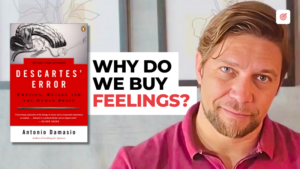Writing well is matter of talent or technique Maybe this is a deep philosophical question.
How about analyzing market-proven copywriting examples and take our lessons from there?
Sounds great? So welcome to the part 1 of the 24 copywriting techniques we are going to approach in a 6 videos series.
We’re covering 4 categories: blogging, email marketing, sales page, and about page.
Let’s learn how they work and how you can do even better.
In this first video, we will learn 3 copywriting techniques to create eye-catching blog post titles.
But before we get into it…
Let’s dive in.
Why blogging is and will continue to be relevant.
Blogs are and will continue to be attractive because:
- Skimming a blog post is faster than watching a YouTube video.
- There’s more information available in this format.
- It’s easier to store information from blogs than other types of online media.
People who advocate that blogs are dead are the same ones saying that audiobooks are killing paperback books.
Here’s what’s wrong with this idea:
Audiobooks won’t kill books the same way videos won’t kill blogs because different types of media are inclusive, not exclusive.
I read books, I listen to audiobooks, I watch videos, I listen to podcasts, and I read blogs – a ton of blogs.
Research led by Hubspot says that:
“businesses that blog actively get 97% more inbound links.”
Blogs are on the top of effective Inbound Marketing Strategies.
Now, here’s todays’s play:
We will analyze 3 blogging copywriting examples from real market cases to learn 7 copywriting techniques that will make your blog stand out.
Shaw we?
Copywriting Example 1 – Convince & Convert: 7 Questions to Ask When Buying a Social Media Management Tool For Your Agency
What we can learn from this copywriting example?
Copywriting Technique #1: Numbered Titles
If something can be said in 3 words, there’s no reason to use 10.
That’s a foundational principle in effective communication, especially when it comes to written communication.
What does that mean, exactly?
It means that not exposing your audience to unnecessary information is a foundational principle of copywriting.
And numbered titles advertise that idea before your audience gets in touch with your content.
It’s like a sales promotion. You are pitching your content with the promise of delivering it without wasting people’s time.
Imagine a Search Engine Results page, aka SERP, with 10 pages as a result of a search query.
Let’s say one of them uses a number in its title.
The chances of this page ending up getting most of the clicks are higher than other pages, even without raking on the top positions.
Did you get what I just said?
A simple copywriting technique applied to your blog title can drive more traffic without ranking higher than other results not using that.
One thing to keep in mind, though, is that the higher the number, the lower the engagement. Keep it short.
So how to apply numbered titles to your copywriting?
Here are 3 elements to add this copywriting technique to your copy:
- When possible, place the number at the beginning of your title.
- Favor odd numbers like 7, 9, and 13 to intrigue your audience. Round numbers don’t stand out as much.
- It might seem obvious, but deliver the number of solutions proposed in the title in a clear way. That means, number your topics so your readers can navigate the content seamlessly.
Copywriting Technique #2: Questions
Questions are the most common way of interaction invitation.
Questions perform great in blog headlines and introductions.
By using questions on your blog titles, for example, you are inviting your audience to click through and check what's behind the curtains.
Questions in introductions open a loop that can only be closed by an answer.
This unfinished aspect triggers curiosity, one of the most powerful persuasion Mental Triggers, leading to more engagement.
To know more about mental triggers and how they can add more conversions to your marketing efforts, I’m leaving a link to our free guide:
The link is in the description. Don’t miss it.
So, how to use questions in your copywriting examples?
Besides the word “question” used by Convince & Convert copy, you can use:
- Why
- How
- What
And an extra tip here: These 3 words are suitable to be used in different buyer’s journey stages:
How so?
- Use Why for Top-of-the-funnel content.
- use How for Middle-of-the-funnel content.
- And use What for Bottom-of-the-funnel content.
To know more about sales funnels and buyer’s journey stages, check out our
I guarantee you’ve never seen anything like it. I’m leaving a link in the description for you. Make sure you don’t miss that.
Copywriting Technique #3: Specificity
The riches are in the niches, right? The more targeted your copywriting is, the more engaged your audience will become.
In Convince & Convert copywriting example, the solution provided is targeted to agencies only.
That reminds me of a common mistake in segmentation.
To think that being specific is the same as leaving potential customers out of scope.
But pitching running shoes require a message incompatible with flip-flops. Targeted communication always wins.
Think like this: having 50% of something is always better than 100% of nothing.
Niching down your copy is more likely to give you that 50% of something, and a general message, that 100% of nothing.
Another way of seeing that is:
Being a big fish in a small aquarium is better than being a small fish in a big aquarium.
That’s a business growth hack.




